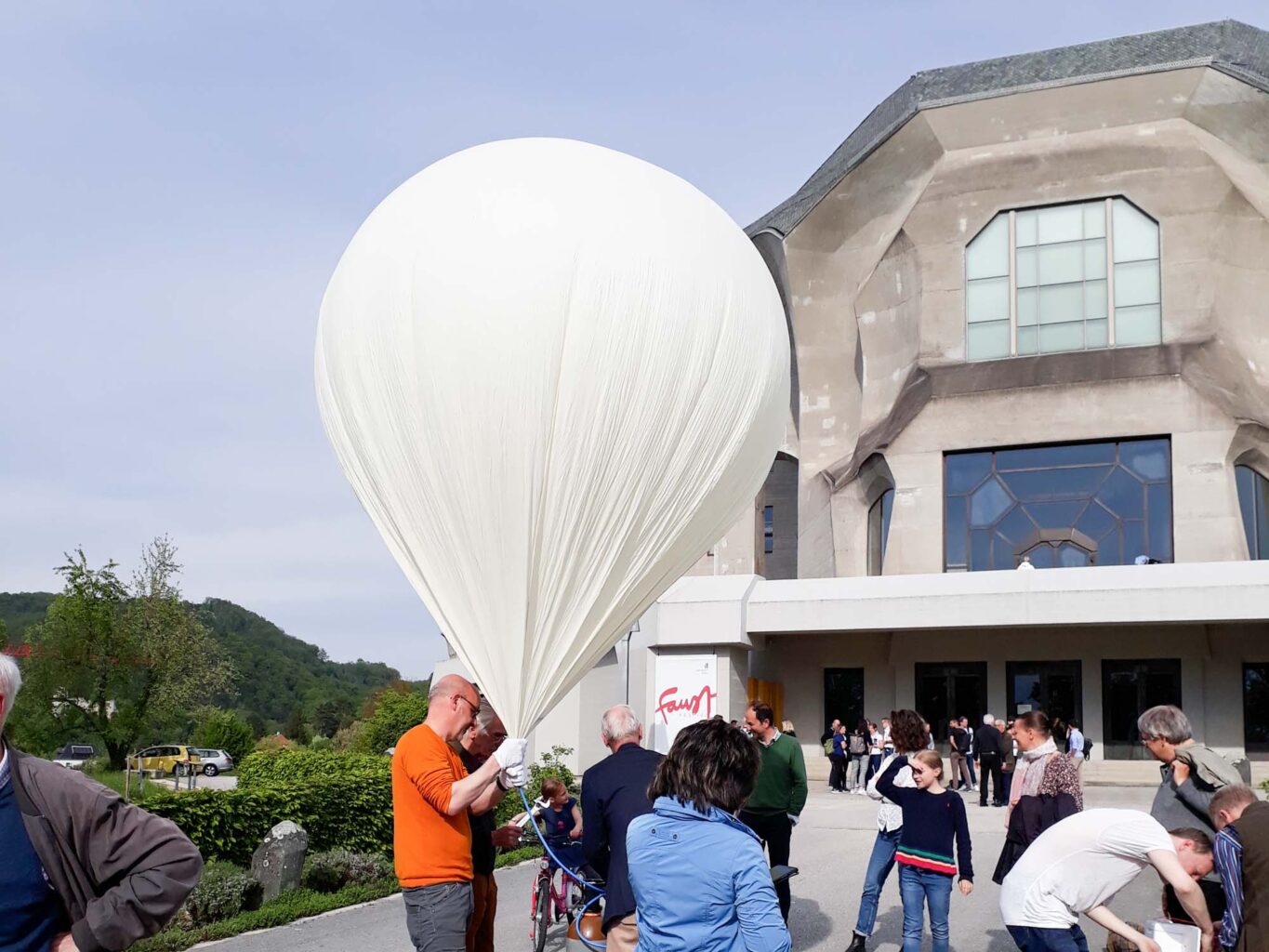At the end of April, anthroposophically interested scientists met for the annual workshop for physicists and physics teachers.
This time there was a big experiment. A weather balloon was used to measure the Earth’s thermal radiation. The evening and night are favorable because the sun does not shine on the Earth.

For this purpose, the weather balloon carried a measuring probe into the stratosphere, in which, in addition to data on the air envelope (air pressure, temperature, and humidity), the heat radiation of the Earth into the cosmos, as well as the heat radiation that scattered back to the Earth by the atmosphere through scattering, absorption, and re-emission, were to be measured. The amount of helium was calculated in such a way that the balloon was to rise to an altitude of 36,000 meters and would later burst at an altitude of 37,000 meters. According to the plan, only 45 minutes would have been necessary for the way back in the parachute. After three hours, the balloon should have dived back into the mobile network and sent position information. A signal came from an alp south of Lake Lucerne. For reasons unknown to us, the balloon finished its ascent at 35,944 meters above sea level and was then driven southwards at this altitude for many hours with the high-altitude winds of the stratosphere. How this is possible remains a mystery. At this altitude, due to the low air pressure of only about 5 hPa, the balloon was inflated to a diameter of about twelve meters.
After about 5.5 hours at this altitude at -58°F (-50°C), the inside of the polystyrene probe was also cooled to -58°F (-50°C). Despite the low-temperature lithium batteries, the supply voltage had dropped from 9 V to 5 V. At first, some sensors no longer provided usable measured values. Then, the data memory for radiation measurement broke down. And finally, probably all electronics, including the GPS tracker, broke down (fortunately for us, this later resumed operation)! Despite the enormous cold, the physicists have a complete data set from the nocturnal stratosphere as well as a meaningful partial data set by 2:04 a.m. If the flight had gone according to plan, we would only have measured a much shorter and less interesting data set! Translation: Monika Werner













